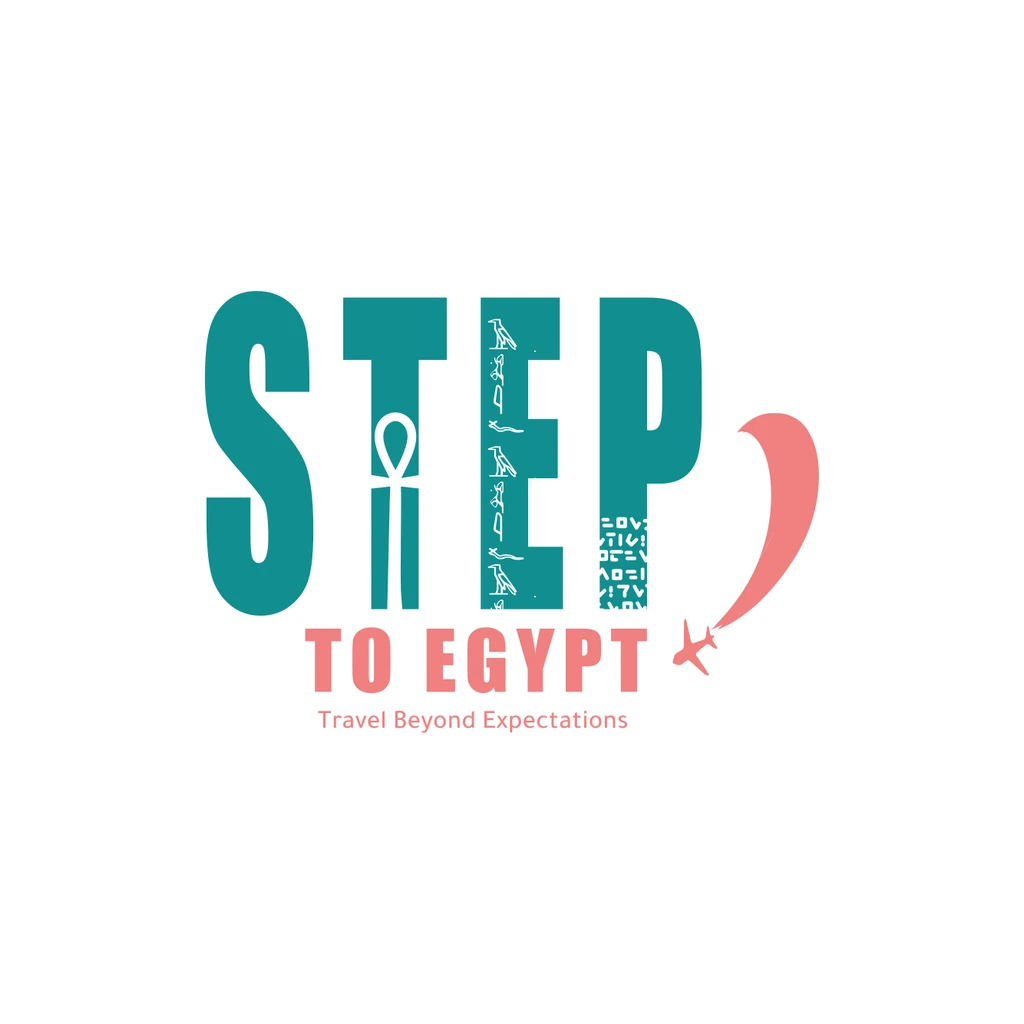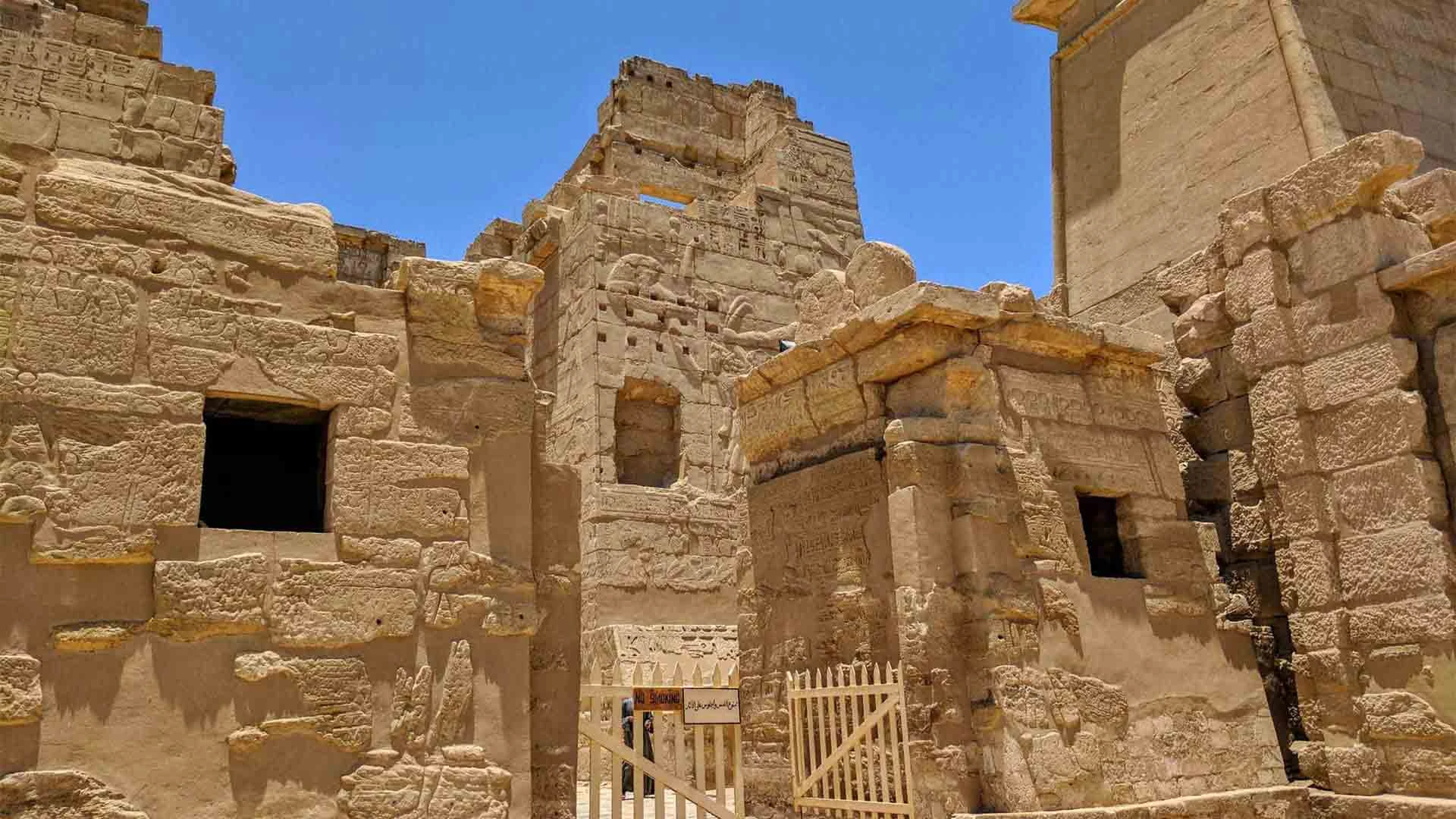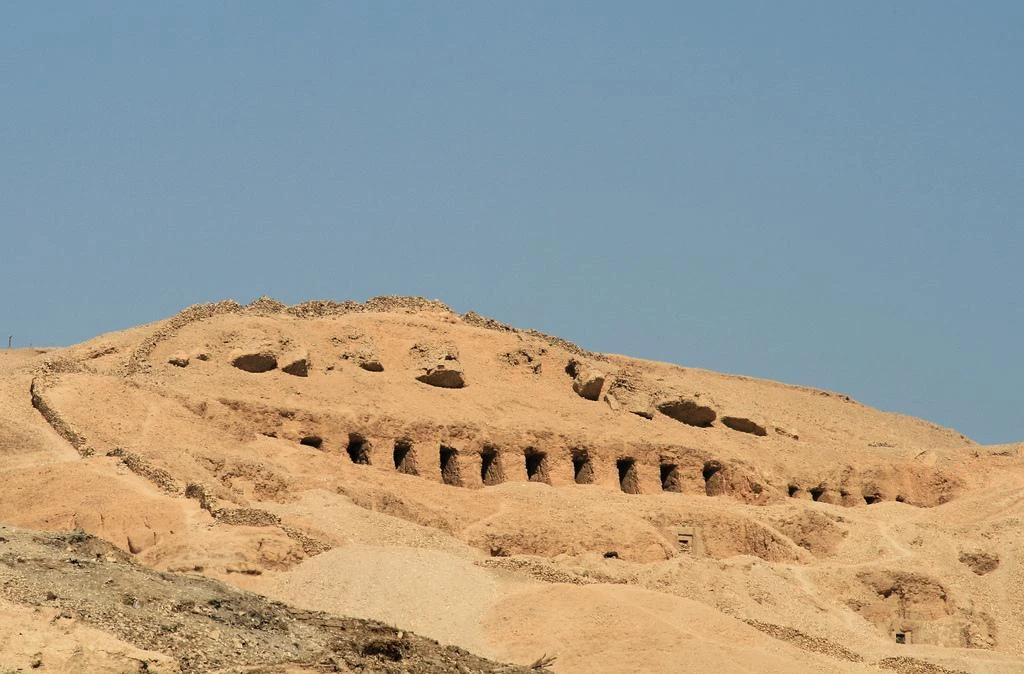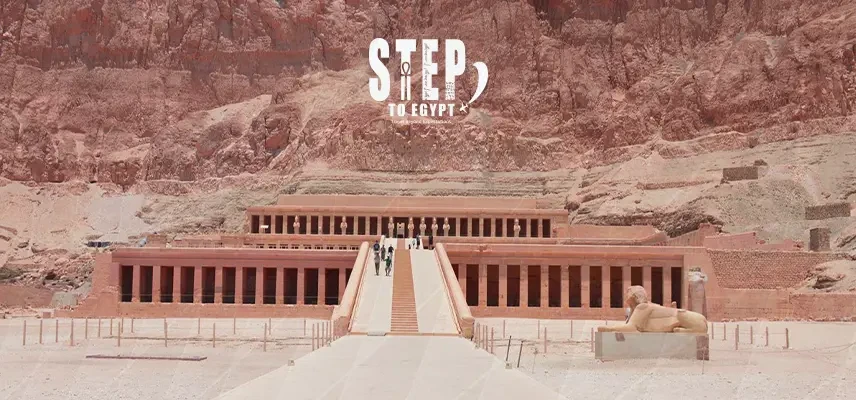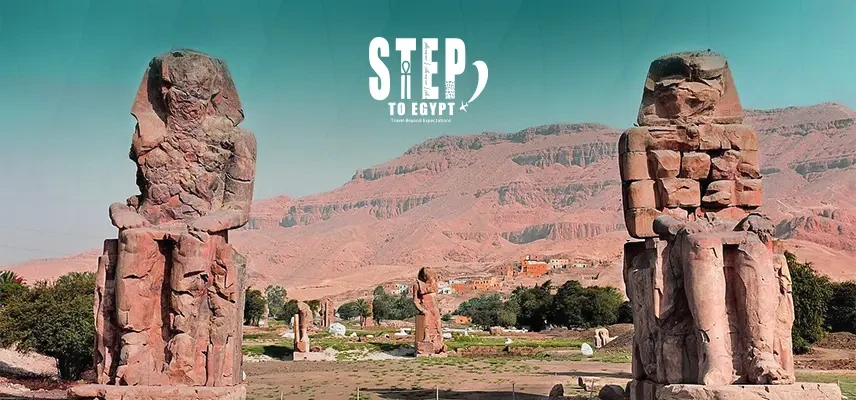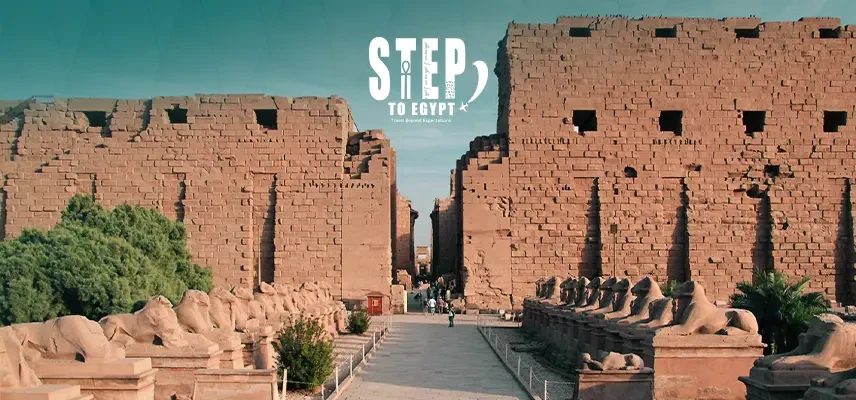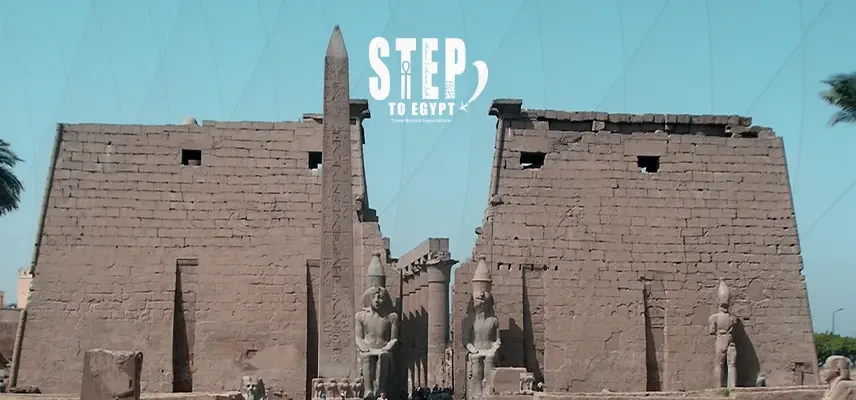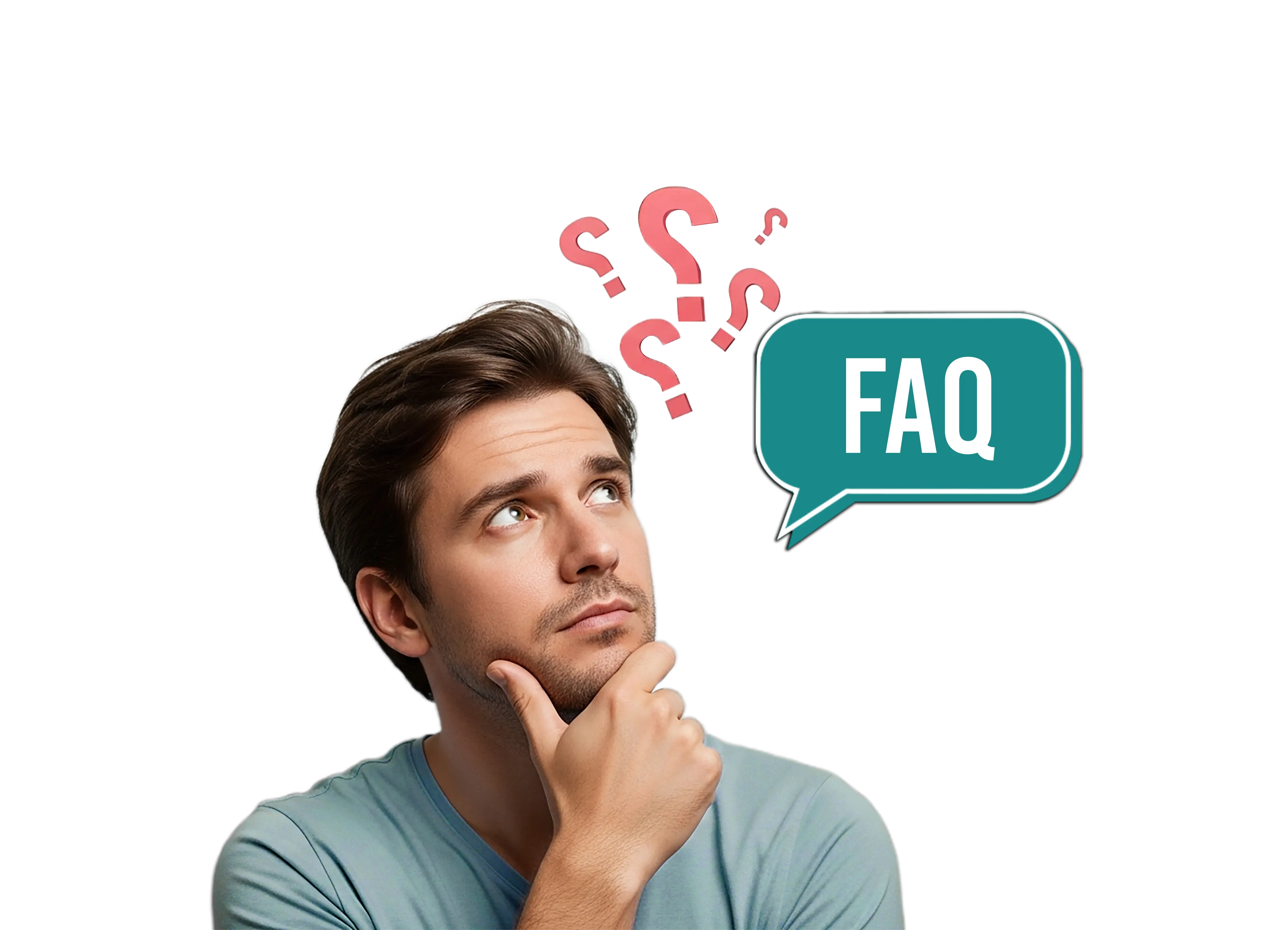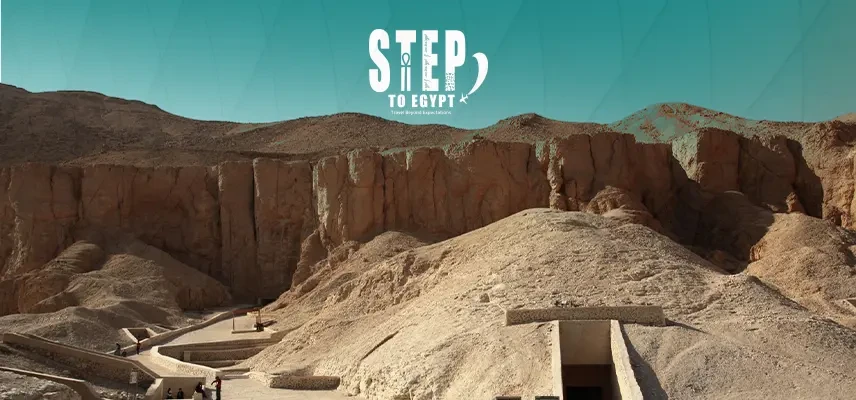
The Valley of the Kings is one of the most iconic archaeological sites in the world, located on the west bank of the Nile River near Luxor, Egypt, and for nearly five centuries, it served as the sacred burial ground for pharaohs, queens, and nobles of the New Kingdom, 1550 to 1070 BCE. During Egypt tours, you will know that there are more than 60 tombs hidden beneath the rocky cliffs, including that of the famous boy king Tutankhamun, and these tombs were designed to guide the souls of the deceased into the afterlife. They are decorated with vivid wall paintings and sacred texts and filled with treasures to serve them beyond death. And even today, the Valley of the Kings in Luxor, Egypt, stands as a powerful reminder of ancient Egypt’s artistry.
Have you ever heard about the VIP burial zone? This place is where ancient Egyptian kings were buried in secret tombs packed with treasures, magic spells & gold masks (yes, like the one in every history book ever). If you have ever dreamed about exploring real ancient tombs or you’re into mysterious underground chambers that hold the secrets of the past, then you should consider visiting the Valley of the Kings in Egypt, and before that, know some info about it. It is a must-see for anyone checking out Egypt tour packages, especially if you're already planning a stop in Luxor. And just wait till you hear what’s actually inside those tombs…

What Is the Valley of the Kings?
Also known as the Valley of the Gates of the Kings that you will see during Egypt day tours, this dry and quiet valley hides 63 royal tombs beneath its rocky cliffs. Here we are talking about the final resting spots of some of Egypt’s most powerful pharaohs, like Tutankhamun, Seti I & Ramses II. The tombs in the Valley of the Kings were packed with gold and jewelry, with sacred texts all over the place to guide the pharaohs into the afterlife.
Just to mention that the valley was actually in use for more than 500 years during the New Kingdom (from around the 16th to the 11th century BCE), and in 1979 it got added to the UNESCO World Heritage list along with the rest of the Theban Necropolis.
The Valley of the Kings is one of the best temples that you will explore on Luxor day tours, which is hewn into Luxor’s western cliffs, was the royal cemetery of New Kingdom Egypt (1550–1070 BCE). It lies beneath the pyramidal peak of al-Qurn. Decorated with funerary texts guiding pharaohs to the afterlife, the tombs evolved from bent-axis plans to long corridors for added security.
Though many were looted, finds such as Tutankhamun’s gold mask reveal the era’s opulent craftsmanship. Ongoing digs, laser scans, and conservation in both the East Valley and the “Valley of the Monkeys” continue to refine our view of New Kingdom religion and art.

Where Is the Valley of the Kings Located?
The Valley of the Kings is on the west bank of the Nile right across from what we now call the city of Luxor. Back then, Luxor was actually Thebes, the religious and political center of ancient Egypt. The area’s surrounded by cliffs and rocky hills and there’s this tall peak called Al-Qurn (The Horn) that kinda looks like a pyramid. That’s probably why they picked the spot. It is also close to other ancient places like the Valley of the Queens and Hatshepsut’s Temple.
If you are now planning or about to plan a Luxor Valley of the Kings tour, expect amazing views, a lot of walking time (you will never feel tired) & just magical ancient Egyptian energy all around. Add a royal touch to your adventure through the Valley by cruising the Nile with our Dahabiya Nile Cruises.

Why Was the Valley of the Kings Built?
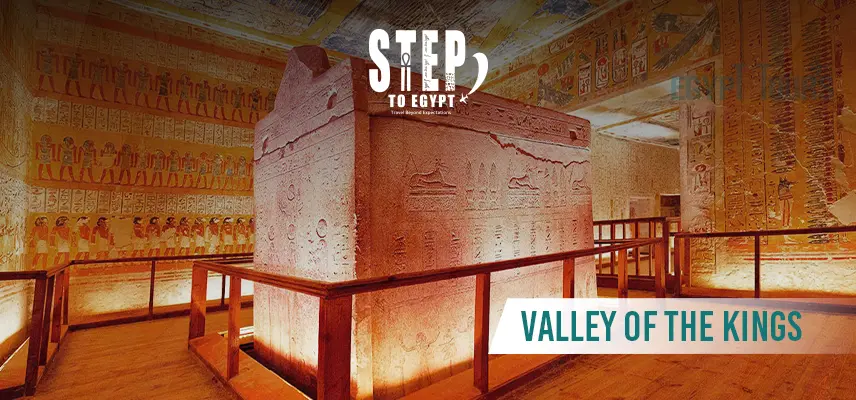
Ancient Egyptians were obsessed with the afterlife. They believed that if you prepared properly, you could live forever in another world. For pharaohs, that meant being buried with everything they might need, like furniture, clothes, food, wine, and even their favorite servants.
Instead of building big flashy pyramids, they started carving hidden tombs into the mountains to keep robbers away. The Valley of Kings in Egypt was the perfect secret spot for that and you can see all of this with our Egypt Nile cruise tours. Inside each tomb, walls were covered with magic spells, religious texts & star maps to guide the soul of the pharaoh. And yes, many tombs were robbed anyway, but some treasures did survive (Tutankhamun’s golden mask).
Salima Ikram, a professor of Egyptology at the American University in Cairo and a National Geographic grantee, said that the ancient Egyptian pharaohs included many things in their tombs, including pieces of furniture, clothes, and jewelry. However, what remains a mystery is that they didn’t have any books buried with them. The tombs included many kinds of foods and drinks, such as wine and beer, as well as the precious objects that were meant to help the deceased pass on to the afterlife, and Valley of the Kings is one of the best Luxor attractions that you will visit with Step to Egypt tours.

What Is the History of the Valley of the Kings?
The first king buried here was Thutmose I, and the idea came from his architect Ineni. From then on, it became the royal burial ground for all the top dogs of the New Kingdom. The Valley of the Kings Luxor Egypt became a top-tier spot for pharaohs.
The tombs were carved by workers from the village of Deir el-Medina who left graffiti and notes all over the place. And during the 18th and 19th centuries, European explorers showed up and started drawing maps and digging around.
There were also many expeditions by the Napoleon expedition to Egypt to draw maps to the tombs inside the valley until around the beginning of the 20th century when the team of the American explorer Theodore M. Davis discovered many Royal and non-Royal tombs. By the 20th century, the valley was on every archaeologist’s radar. One name you’ll keep hearing? Howard Carter, the one who found King Tut’s tomb in 1922, full of glittering treasures.

When Was the Valley of the Kings Discovered?
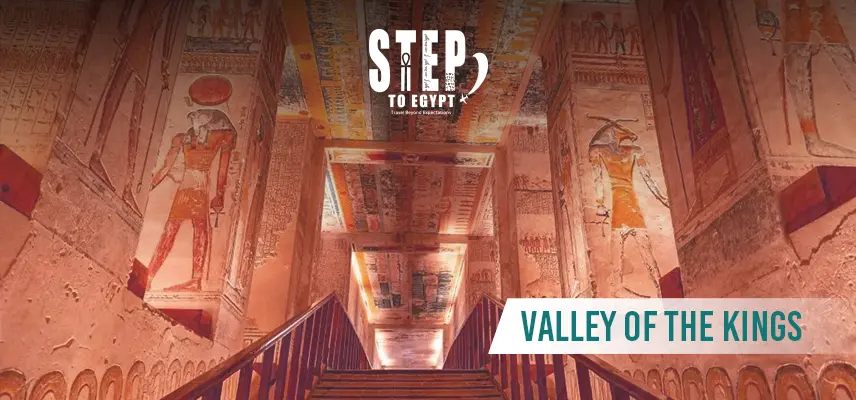
Okay, so the ancient Egyptians obviously knew about it but modern discovery happened in pieces. Some tombs were found way back in the 1800s. But the big deal was in 1922, when Howard Carter found Tutankhamun’s tomb (KV62). This was the only tomb found almost completely untouched and it had more than 5,000 artifacts. After that, the Valley became one of the most visited places in Egypt luxury tours.
This discovery attracted tourists from all over the world. Excavations are still in process in some areas of the Valley of the Kings and a rotation system is in place for visitors to visit the tombs as restoration procedures are in place during their Egypt classic tours. Today, new tombs and chambers are still being found. It’s like the valley never stops telling stories.

What Is Inside the Valley of the Kings?
The valley has two sections:
East Valley:
Where most tombs are, including the big names like:
- Tutankhamun
- Seti I
- Ramses II
- Thutmose III
- Ramses VI
- Merenptah
West Valley:
Fewer tombs, but still important:
- Amenhotep III
- Akhenaten (unfinished)
- Ay
Some tombs are open to the public, but not all. Your Valley of Kings tour ticket usually lets you enter 3 tombs. You'll need a special ticket for King Tut's tomb though.

What Are The Most Famous Tombs in the Valley of the Kings?
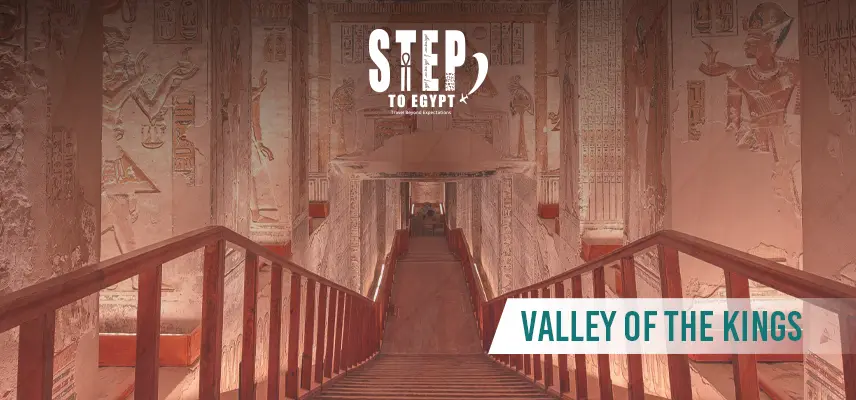
The Valley of the Kings Luxor Egypt holds some of the most spectacular tombs ever discovered. These tombs show off the wealth & beliefs as well as artistic talent of ancient Egyptians, especially during the New Kingdom.
Each tomb tells a different story about a different ruler, and if you're now thinking about Luxor and Aswan Nile cruises, these are the must-sees:
- Tomb of Tutankhamun (KV62): a tomb found in 1922 by Howard Carter. This is the most famous tomb in the valley. And even though it's small but it was nearly untouched and had over 5000 artifacts, including the famous gold mask.
- Tomb of Seti I (KV17): This tomb is massive and beautifully decorated with religious texts like Book of the Dead and Amduat. Discovered in the year 1817.
- Tomb of Ramses II (KV7): it is one of the biggest tombs with wall scenes from the Book of the Dead and other texts. Ramses II ruled for a long time and was a legendary pharaoh.
- Tomb of Ramses III (KV11): this one is known as the Harper's Tomb because of its music scenes, it is also got detailed wall art and impressive long corridors.
- Tomb of Thutmose III (KV34): a tomb that was built high up on a cliff and can only be reached by steep stairs. The wall art is kinda minimalistic and uses stick-figure-like drawings of gods.
- Tomb of Horemheb (KV57): This tomb mixes styles from the Amarna Period and also traditional 19th Dynasty. It's colorful, with lots of underworld scenes.
- Tomb of Amenhotep II (KV35): This one held a mummy cache… so several royal mummies were found here not just Amenhotep II.
- Tomb of Ramses VI (KV9): while originally started for Ramses V, it has complex wall art and a famous ceiling that shows Nut, the sky goddess.
- Tomb of Merenptah (KV8): it's known for its large size, a huge sarcophagus, and a lot of hieroglyphs on the walls.
- Tomb of Queen Hatshepsut: here’s the longest tomb in the valley, about 215 meters. It has two sarcophagi:- one for Hatshepsut and another for her father.
- Tomb of Ramses XI: Though unfinished, it has some artworks showing him kneeling between goddesses.
- Tomb of Yuya and Tjuyu (KV46): These are Queen Tiye's parents. Their tomb was found almost fully intact with lots of beautiful goods.

How Is the Architecture of the Valley of the Kings Designed?
The tombs in the Valley of the Kings Egypt aren't like the pyramids; but they’re hidden underground in rocky cliffs. This was done to protect the pharaoh tombs in Egypt from being robbed. You can bring your family and book our Egypt family tours to visit the Valley of Kings and enjoy these memories with your family and friends. These tombs stretch deep into the earth with long hallways, sharp turns and decorated chambers.
The designs changed over time. Some older tombs had curved or bent axes, while newer ones used straighter lines. The walls are full of magical symbols, gods & sacred texts like the Book of the Dead. These decorations were supposed to help guide the pharaohs through the underworld. Tomb builders also chose tomb locations based on natural cracks and the landscape. All of this shows how advanced Egyptian architecture was. This is one of the best Egypt honeymoon trips to consider

What Artifacts Have Been Found in the Valley of the Kings?
This place is a goldmine…literally. The tombs in Valley of the Kings were filled with everything a ruler might need in the next life. We're talking gold jewelry, weapons, clothing, food offerings and even furniture.
One of the biggest finds was Tutankhamun's tomb, where they found:
- A golden death mask
- A solid gold inner coffin
- A golden throne
- Over 5,000 total artifacts
Other tombs had statues of gods, canopic jars (for organs), amulets and chariots. And even though many tombs were robbed archaeologists still found tons of treasures that give insight into Egyptian life and beliefs.

What Makes the Valley of the Kings So Important?
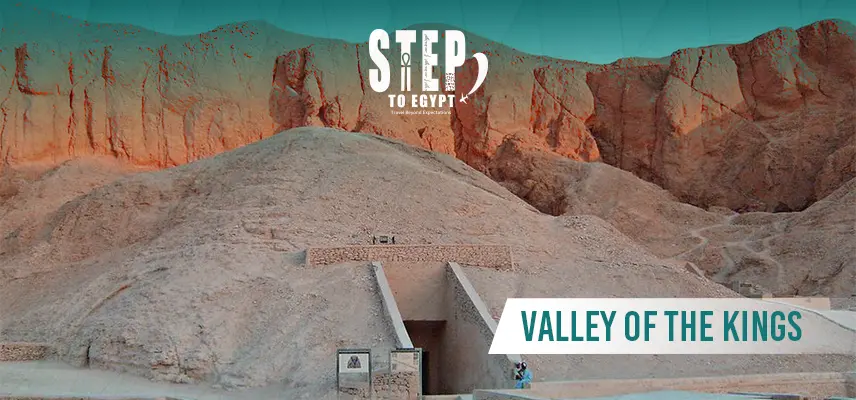
The Valley of the Kings is one of the top archaeological sites in the world. It replaced the pyramids as the preferred burial spot for pharaohs, especially during the 18th to 20th dynasties. The secret tombs helped protect against looters and reflected new religious beliefs.
This valley was once called "The Great and Majestic Necropolis of the Millions of Years of the Pharaoh." Sounds pretty epic, right?
In 1979, it became a UNESCO World Heritage Site. Today, researchers still discover new tombs and artifacts, showing us there's more to learn. Ancient graffiti from Greek and Roman tourists also proves that this place was famous even back then. We advise you should consider it in your next Egypt budget packages. It’s no surprise that the Valley of Kings tour is a must on every tour with Step to Egypt tours.

What Should You Know When Visiting the Valley of the Kings?
If you’re planning a visit to Egypt solo tours, here are some helpful tips:
- Only 3 tombs are included with your standard ticket. Others, like Tutankhamun’s, require a separate ticket.
- Some tombs are closed at times for restoration, so check with your guide or a trusted source, or the operator you book your Egypt Christmas tours with.
- Wear comfy shoes and bring water, as it's hot and there's a lot of walking.
- Photography might be restricted, especially with flash, so ask before snapping pics.
- The tombs that are open vary, but there is always something worth seeing.

What Makes the Valley of the Kings So Important?
This place is like a real-life history book carved into stone. It’s packed with:
- Tombs of the most powerful pharaohs
- Wall art showing ancient gods, afterlife journeys in addition to daily life
- Sacred texts like the Book of the Dead, Book of Gates and Amduat
- The famous golden mask and treasures from Tutankhamun’s tomb
- Archaeological discoveries still happening today
And because it switched the burial tradition from pyramids to hidden tombs, it marked a major change in Egyptian beliefs and style.
Honestly, it’s the kind of place that makes you feel like you’ve entered another world.

How Can I Experience the Valley of the Kings?
If you made it to the end of this blog, then you’re clearly into ancient Egypt as much as I am. So don’t just look at pics on Instagram, but go walk into the tombs where actual pharaohs were buried.
Book your tour now with Step To Egypt and start your journey through the Valley of the Kings Egypt. History is waiting, and so is the perfect selfie with a tomb wall covered in ancient art.
About The Author: STE Team
